T&S Stores founder Kevin Threlfall’s new book shows the rise of the convenience chain. In this extract he relives the group’s sale to Tesco.

In 2002 the British food retailing market was estimated to be worth £100bn, of which the convenience sector had grown to be worth between £15bn and £20bn. The sheer size of it, coupled with the growth prospects, could no longer be ignored by the big boys.
Tesco had entered the market through its forecourt association with Esso and in 2002 was trading from 75 Tesco Express stores with a further 50 to open in the coming year. Jim McCarthy, our chief executive, and I went to visit a recently opened store in Wednesfield in the West Midlands and were frightened to death by what we saw.
Not only was the store extremely busy, it was way ahead of anything we could offer our customers. We immediately recognised that Tesco as a competitor in neighbourhood markets would be a major challenge, especially with its world-renowned prepared food offer and broader range. In fact, to put it in a nutshell, they would wipe the floor with us.
Although with our newsagents’ background we were probably stronger than Tesco in product groups such as news, confectionery and greetings cards, we were way behind them in product groups such as chilled, fresh and ready meals.
These were the real growth areas of the convenience sector and whoever could offer an acceptable range on a consistent basis would lead the way. For years we had experimented with different suppliers but we always ended up losing the battle with either too much stock, which we then had to throw away, or too little stock to satisfy the local demand.
Now suddenly, in all its pomp and splendour, Tesco was doing what we had been trying to do for years and succeeding. It sent a shiver down my spine as I realised it was probably going to take us years, if ever, to achieve the same standards.
Sainsbury’s Local also had an estate of about 50 stores located primarily in London and the home counties. The standards were as good as Tesco Express and while we knew that they would probably concentrate on their heartland for the next few years, eventually they could also become serious competitors if and when they expanded their horizons.
Safeway had also entered the convenience market in a joint venture with BP and traded from 51 sites. It also had an additional 179 petrol filling stations, most of which contained convenience outlets. It was only a matter of time before all the major supermarkets became involved and we would be caught in the crossfire. Timing is everything in business and the more I thought about it, the more I kept thinking the unthinkable: maybe it was time to get out.
At a crossroads
We were one of the top 250 Plc companies in the UK with a great track record, thousands of employees and a lot of satisfied shareholders. I did not want to jeopardise everything we had done by just carrying on regardless and trying to ignore what was likely to happen in the future.
We had been a public company for 18 years and I was immensely proud of what we had achieved for our employees and shareholders alike. We had to do the right thing for them going forward and I could see that a tie-up between Tesco and ourselves had considerable merit for both parties. In fact, the more I thought about it the more convinced I became that it was the right thing to do.
After a long board meeting in January 2002 and agreement from my fellow directors I decided to write to Sir Terry Leahy, chief executive of Tesco. In my letter I hinted at what was on my mind: As eating habits have changed, fresh and chilled products have become massive areas of opportunity for the convenience market.
There are, however, logistical problems of supplying small quantities of pre-packed meal solutions, chilled and fresh products on a daily basis. It is this area that will differentiate and determine the success of c-store retailers going forward. For us to achieve a ‘brand’ status, we must become a destination store rather than a desperation store. The prize for achieving this goal would be domination of neighbourhood retailing for years to come.
The following month I drove down to Tesco’s head office in Cheshunt to meet Sir Terry and we both agreed the idea was worth pursuing.
“For us to achieve a ‘brand’ status, we must become a destination store rather than a desperation store”
Kevin Threlfall
While Tesco analysed our store portfolio, it was vitally important that it remained secret and we decided that any future meetings would not be anywhere near Cheshunt.
The biggest concern that emerged from the potential deal was that it may be referred to the Competition Commission on the basis that the Office of Fair Trading (OFT) would have to decide whether the small-store grocery market should be viewed completely separately from the ‘big shop’, or whether they were viewed as being part of the same market.
Throughout the summer Tesco continued to review our stores and I had a further meeting with Sir Terry, who had now assembled a team that included group corporate affairs director Lucy Neville-Rolfe to ensure that there were no problems likely to occur with the Competition Commission.
It was remarkable that both sides had managed to keep the whole thing under wraps, but as October approached a few rumours were starting to circulate that our two companies were in talks with each other. Sir Terry finally phoned me and said that provided we could agree on a price that suited both companies, he felt that there was a deal to be done.
Down to the nitty gritty
I drove down to Hertfordshire, where we met in a hotel and we started off by talking about our respective football clubs. Sir Terry was a lifelong Everton fan and I was a lifelong Wolverhampton Wanderers fan. Unfortunately although Wolves had been one of the most famous football clubs in the world in the 1950s, we now languished in the division below the Premiership and were no match for the ever-consistent Everton.
We danced around the ring for a while before we got down to the real nitty gritty of discussing the price Tesco were prepared to pay for our business. In most Plc takeovers a 30% to 40% premium to the share price is the average that is paid. This was complicated by the fact that our share price had enjoyed a good run in the previous few months and this had to be taken into consideration.
In the end we agreed on a deal that represented a premium of 36.3% over the average closing price for the 90 dealing days prior to the announcement. Including debt Tesco was paying around £530m for our business. It was a fair deal to both sets of shareholders as we had received a good price but by the same token Tesco had not overpaid for a business that slotted in beautifully with its future strategy. As the issue of 2.2414 new Tesco shares was satisfying the purchase for each T&S share, the price they were paying varied with how much the Tesco share price fluctuated from day to day.
It was also good for customers and, importantly for me, was great for all our T&S staff. There were to be no wholesale redundancies as Tesco intended to run our business as a separate entity.
The deal was announced on October 30, 2002 to a snowstorm of press coverage as it came as a big surprise to the City. By and large the national press thought that it was a good deal for both parties but needless to say there was a lot of coverage that focused on Tesco breaking into another sector previously dominated by independent retailers.
I came in for comment as the ‘Rags to Riches’ story, or as The Sun newspaper put it ‘Fags to Riches’. The press like nothing better than a tale of a barrow-boy come good, which was fine except for the fact that a hideous picture of me aged 23 had been dug up from somewhere and put into print. When I spoke to Sir Terry on the day of the announcement, with his Liverpool wit he suggested I use some of my money to buy up the negatives!
Amazingly it was the second major deal announced in the convenience sector that week, as on the Monday the Co-operative Group had bought the loss-making 600-store chain of Alldays for £131m. It was amazing to think that in just one week, the ownership of nearly 2,000 stores had changed hands.
I felt absolutely shattered on the day of the announcement, as I had worked through the night with our financial advisers, Rothschilds, to ensure the deal went through and also to safeguard the interests of my fellow directors and staff.
Good cop, bad cop
I had been incredibly lucky to work with some exceptional lawyers in my career: first John Wardle and David Owen at Edge & Ellison and then Chris Rawstron and Russell Orme at DLA.
It was John Wardle who had marched me out of the offices of Gallaher’s lawyers when we were a signature away from selling out, and it was Chris Rawstron who walked me through all the detail involved when selling out to Tesco.
Chris was a proper Yorkshire lad who called a spade a shovel and was a brilliant lawyer. Whenever we were in meetings I always felt sorry for the other party’s lawyer, as Chris always seemed to get the upper hand in terms of presence and charisma. It was like having a Rottweiler by your side, knowing he would only bite if he had to! Russell Orme on the other hand was pure silk and smoothness, but their good cop, bad cop double act made them a formidable force and I was very grateful to them for looking after T&S’s interests so well over the years.
Tesco had committed to keep our customer and distribution centre in Brownhills open and retain the 1,000 staff based there on their current employment contracts. They had decided that about half of our 862 c-stores would convert to their Tesco Express format and this would be put into effect over a three- to four-year time span. The remaining c-stores would continue to trade as One-Stop, and this would be set up as a separate company with its head office in Brownhills. It was also decided that as soon as possible the Dillons newsagents chain and the Supercigs discount tobacco shops would be sold.
The only remaining concern was whether any regulatory action, such as referring the bid to the Competition Commission, was required. The proposed takeover would raise Tesco’s share of the c-store market from 1.2%t to 4.6% by value. The OFT invited submissions from the trade about Tesco’s bid until November 13. After that the OFT had a further fortnight to consider whether or not regulatory action was required.
At the end of November I received a phone call from a very excited Lucy Neville-Rolfe
at Tesco to tell me that the trade and industry secretary Patricia Hewitt had decided not to refer the purchase of T&S to the Competition Commission and we had now cleared all the necessary regulatory hurdles.
I had a lot of people to thank and December was spent visiting stores and organising parties. We had a wonderful celebration for all the directors of T&S at Le Manoir in Oxford on January 10 2003, followed by a party at the Savoy on February 6 to thank all our major shareholders, brokers and analysts for their support over the years.
In June 2000 I had been presented with the Central Region National Consumer Products and Services Entrepreneur of the Year Award in a contest run by Ernst & Young. When I got through to the national final in October, a lot of fund managers who owned T&S shares came along to support me. I was staggered to be announced as the winner, especially given the fact that the previous year’s winner, Steve Smith of Poundland fame, also came from Wolverhampton! Those same investors who had supported me that night had owned T&S shares since the 1980s and I thanked the likes of Brian Stillwell, Habib Annous, Iain Scotland and Alan Sippets for sticking with us through thick and thin.
Turning to the analysts I commented that I thought the retail sector was blessed with huge talent and I thanked the likes of Clive Black, Jeremy Hilditch, John Dickinson and David Stoddart for all the articles they had written about T&S over the years, most of which I had to say were very favourable.
I finished my speech as follows: “Over these last 18 years I have made some good friends. I’ve been involved in 10 acquisitions, about 40 analysts’ presentations and around 500 institutional one-to-ones, so I think I can honestly say that I have served my time.”
One Stop, One Life

On Stop, One Life by Kevin Threlfall is published by Icon Books at £12.99 and available now on Amazon.




















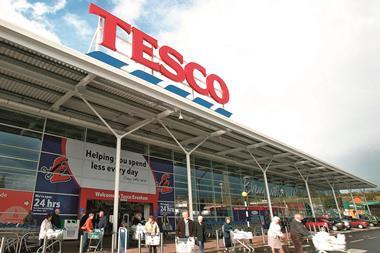
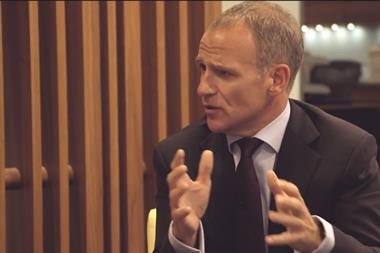
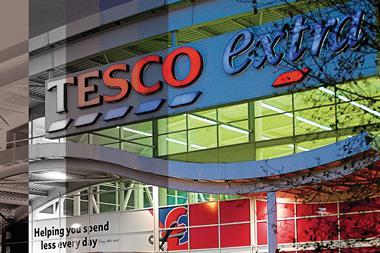
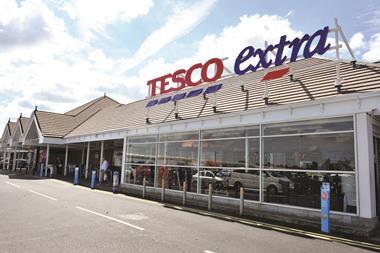
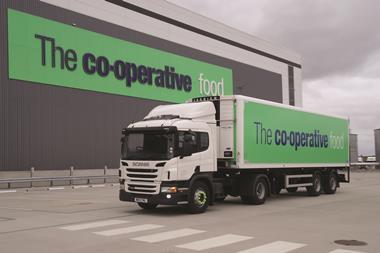

1 Reader's comment